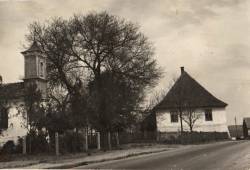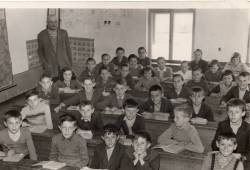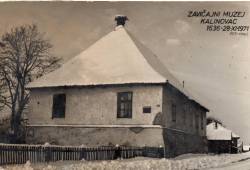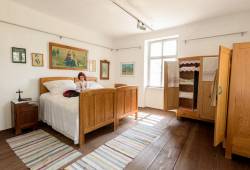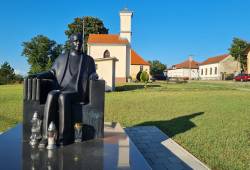Kalinovac County Museum in the frontier station
The people of Kalinovac are among the few in this part of Podravina who can be proud of a well-preserved example of military frontier architecture. Namely, in Kalinovac’s Gornji kraj, there is the so-called station, i.e., the building of the frontier administration (company) built in the 18th century during the reign of Maria Theresa (probably in 1766) when this place, like all other settlements in this part of Podravina, was part of the Military Frontier. High foundations, massive walls, proportionally arranged windows on the facade, and a very high and spacious roof are characteristic of all frontier buildings, including this one. The interior is divided into several rooms, an entrance hall with a wooden staircase, an attic above the wooden ceiling, and a basement. The excellent position on an elevated sandy and drained place has enabled it to be spared the negative external influences which otherwise destroy old buildings, and also ensures it's long existence.
It is assumed that in the 17th century there was a simple wooden guardhouse at this place as part of the defense system on the Habsburg-Ottoman imperial border. Given that the chapel of St. Luke the Evangelist was also located at this place, around which there was a cemetery, it can be concluded that this was the oldest core of the settlement. After the abolition of the Military Frontier (1871), the building lost its original purpose, but remained publicly owned. Thus, after the founding of the parish in Kalinovac in 1881, the station was rented to the parish priest and functioned as a parish house (farof). It was used for this purpose until 1896 when a regional school and an apartment for teachers were placed there. Many famous people from Kalinovac received their primary education there, while the school continued being used in this form until the 1960s when it was moved to a different location.
Wanting to preserve their tangible heritage, the locals renovated the building and in 1971 opened the Kalinovac County Museum. Its establishment was arranged by the local community and teachers of the Kalinovac school who were also on the committee for managing the museum’s collection and arranging the museum’s display. Furthermore, at that time, the station building was also placed under preventive protection as a monument of immovable cultural heritage. The museum’s display consisted of an ethnographic collection, Grgur Karlovčan’s memorial collection and a collection named “Kalinovac then and now” which included objects, documents and pictorial materials that testify to the history of the settlement. Apart from Edo Kovačević, Zdenka Lehner and Paula Gabrić from the Zagreb Ethnographic Museum, local cultural and educational workers and Croatian writer Dragutin Tadijanović helped with the arrangement of the display. Painter Ivan Lacković Croata filled the space with his works, and even today the exhibited objects date from prehistory and older history to recent times, among which a particularly valuable collection of medals stands out.
Although the idea from 1979 to arrange an open-air ethnographic collection in the museum yard has never been realized, the environment still functions as a museum space with a monument to poet Grgur Karlovčan (1913-1942), a stone sculpture “Krajišnik” (2000) by author Janko Mošnja from Pazin and the last work of Marija Ujević Galetović with a marble sculpture of emeritus Ivan Golub (1930 - 2018). The old branched linden tree that towers over the station also testifies to past times. There is also the International Friendship Park, where “the tree of friendship” has been planted by many dignitaries during visits to the Municipality of Kalinovac since its founding in 1997.
Despite its age, the station has outlived its half-century museum collection preserving its original heritage, which testifies to certain forgotten times and remains the lasting heritage of future generations.



